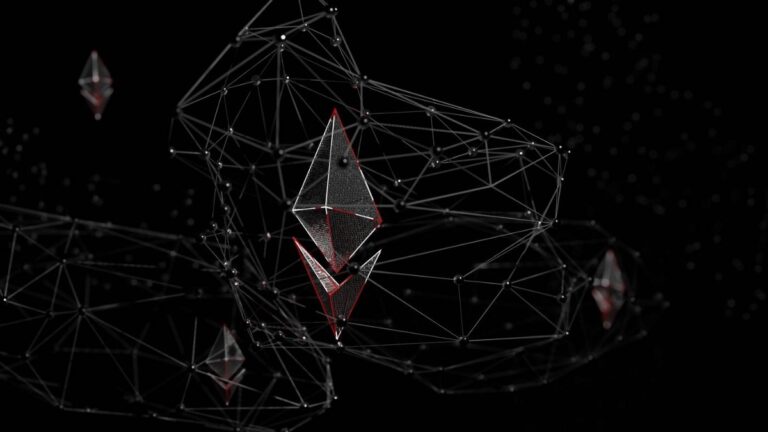
Source: news.google.com
Ever since the popularity of NFTs spread far and wide, there have been talks describing these blockchain-powered tokens as the ultimate cure the world needed to stay true to the spirit of humanity.
But are all NFTs actually stored on the blockchain? If so, how can someone hack and steal millions of dollars worth of NFT items? If these questions come to your mind quite often, believe me, you are not alone! In fact, most NFT skeptics are driven by these questions without knowing the full story, unlike you who will be exposed to the concept of on-chain NFTs it will certainly bring some shock to the Web3 world.
Although I would like to say “Yes”, at least to please some, in most cases they are not. Most collections do not use the concept of chain NFTs. Instead, they use various external options to store data. Here, the data refers to the item itself (be it an image or a piece of art) and the metadata (descriptions, editions, and features).
Going back to how most projects store NFT data, they tend to have smart contracts on the blockchain and most of the data off-chain. NFT projects typically use servers, cloud infrastructure, and IPFS (Interplanetary File Storage) to store their data. While having some degree of blockchain protection is nice, what’s nicer than having as much protection as possible?
Although this is a difficult question to answer in a world where almost 89% of people are unaware of blockchain technology, my answer as a Web3 enthusiast will be “Yes”.
But how? Speaking of the contemporary methods NFT companies use to save data, the servers have gained a negative reputation of late due to multiple data breach scandals, as well as having difficulty storing large volume data such as images.
As for cloud infrastructure, although the need for physical server rooms has been removed, there is still the scope for attacks and outages, which removes them from being the saviors of the transition from Web2 to Web3, despite its ability to handle large data files.
IPFS tends to solve these problems (at least for now) through worldwide distributed storage based on the peer-to-peer mechanism. While this is potentially sufficient (most NFT projects proudly use it), there is room for improvement.
First, the NFT must be cached from the IPFS installation if a user wants to access it, despite having the smart contracts on-chain. If the system goes down for any reason, it becomes impossible for anyone to recover the NFT asset, rendering the purchase worthless.
On the contrary, on-chain NFTs Take full advantage of the power of blockchain technology to store all NFT data using one primary computing method. They contain data (including NFT metadata and the actual asset) in low-memory states using formats like Base64 and SVG (Scalable Vector Graphics).
Storing NFTs on-chain can be useful for NFT holders, even if the classic doomed mishap of project developers evading the community occurs. On a positive note, if a project decides to go fully decentralized, on-chain NFT assets can be instrumental in transitioning from developer to community management seamlessly.
Despite being a newer concept (based on taking shape), there are more than a handful of NFT projects that use on-chain storage. Let’s see some examples.
- cryptopunks – Surprised? Yes, Larva Labs moved all of its NFTs from CryptoPunk to the chain in 2021, making all of the data publicly available for viewing and verification on the Ethereum network.
- arpeggios — Arpeggi is the first on-chain NFT music platform that allows creators to compose music, collaborate with other musicians, and sell their albums on-chain on the ARP network.
- Nouns — Nouns is a generative NFT project on the Ethereum network based on pixelated images. One fact to note here is that the platform is managed by a DAO, which makes it completely decentralized.
- gnars — Gnars is an extension of the Nouns NFT set (with a similar set, of course) with a DAO that focuses on sponsoring extreme athletes.
- OCM Genesis– OCM Genesis is an on-chain NFT collection where the underlying smart contracts generate images in the stream and the data is stored on-chain.
Here, we must not forget the fact that using chain storage leads to high gas costs, although things are greener on the other side after the process.
Despite spending a considerable portion of their budget on on-chain NFT generation, the above projects have been successful as businesses due to many reasons. By making full use of the power of blockchain networks, decentralization of projects becomes easier for companies (yes, they can still be part of the community participation). Also, they can have maximum security without fear of breaches and random outages (no, blockchain outages don’t count here). Overall, a business can gain immensely by going for on-chain NFT assets.
From now on, we can say that making use of on-chain NFTs can be ideal for businesses to stay true to the core aspects of Web3 while earning handsomely in a flurry of different ways. The space is free to explore, making it perfect for niche companies to jump right into the Web3 realm. If you are an entrepreneur looking to harness the efficiencies of blockchain through on-chain NFTs, this is the ideal time to start. It is suggested to work with experienced NFT development professionals to get the best possible result for your company.
Read More at news.google.com